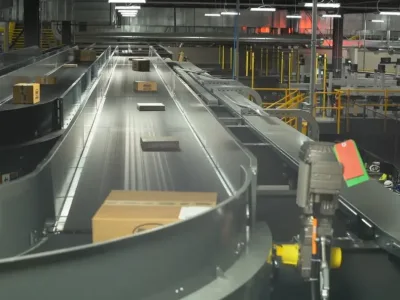
Tinkering with Gompertz’ curves for IoT predictions
“Why is it so difficult to forecast semiconductor revenue?” he asked, acknowledging the volatility of semiconductor revenue in an industry that not only experiences ups and downs but is also subject to design cycles. While, forecasting revenue requires the prediction of both unit volume and average price, volumes alone are more predictable, but with new applications emerging, how could these volumes be forecasted reliably, he asked the audience.

Rhines then turned our attention to nineteenth century mathematician Benjamin Gompertz, after whom a double exponential S-shaped curve is named. The sigmoid function has been successfully used to model the growth of tumors, populations, or market impact in finance, showing total cumulative units on its Y axis as times unfolds on the X axis. It gradually starts with a fast growth rate until unit volume shipments remain stable to reach a growth inflection point, when volume shipment start to decline over the years, with cumulative units growing slower as a market reaches its maturity.
Digging into historical market data, Rhines gave us an insight on where we stand in terms of market maturity for a number of applications.
“You could think that camera sensors are a pretty mature market”, he said, before demonstrating that although camera sensors have been commoditized and can be found in every smartphone, the growth of camera sensors has yet to peak, with these devices increasingly found in cars, in the industrial and medical markets, on drones and many novel consumer applications.

Looking at more traditional semiconductor markets, such as desktop PCs, or notebooks, the CEO was remarkably able to snugly fit the right Gomperz curves, confirming already mature markets in decline (mostly driven by a slow-paced replacement).
Now “how about predicting emerging IoT opportunities”, Rhines continued, trying to fit Gompertz’ curves around fewer data points of cumulative shipped units. Following the same principle and curve analysis, smart meters had still plenty of growth ahead. On the curve, IoT wearables were only at the very start of their journey, expected to peak around 2020 and mature around 2025, but here the data was so scarce and admittedly, because it regrouped many different wearable devices, it broke the rule of only looking at similar units under the same curve.
So the CEO looked at the cumulative number of transistors shipped since the beginning of integrated electronics, asserting that there is still a lot of growth ahead at least for the next 10 to 15 years for the transistor as we know it. But silicon is under incredible price pressure, the cost of transistors being roughly reduced by about 30% every year, hence the uncertainty about generating revenue out of silicon alone.

“So where is the money?” Rhines asked.
The CEO identifies data centers, gateways and IoT nodes as the three major areas of IoT semiconductor growth, putting data centers and their analytics capabilities at the forefront of revenue generation. In fact, his servers S-curve was showing a market in its infancy that would not reach an inflexion point before the next 10 to 20 years, promising plenty of growth in a sector where companies pay for premium silicon shipping in hundreds of millions of units. Gateways will become a big market for semiconductors too, but then IoT nodes (with sensors, actuators, imagers and transmitters), even though they will represent large volumes, will heavily suffer from commoditization.
“In 2015, the IoT semiconductor market only generated $15.4 billion, I see this as disappointing if you compare it with the overall semiconductor market well exceeding the $300 billion mark”.
“IoT edge devices grow in complexity, but they are very cost-sensitive, so how do you make money with IoT if you are at the bottom of the food chain, creating these nodes?” the CEO asked again.
“Only if you move up the chain to have more intelligent systems and ideally, to leverage your semiconductor devices with information services based on the collected data. The real value is in maintenance contracts. It is the IoT data owner who will make the most of the money”, Rhines explained, echoing the conclusion that some MEMS vendors have come to.
“Under increasing price pressure for the IoT nodes, it will be necessary for traditional semiconductor companies to get a share of the information revenue”, he concluded.
Related articles:
Sensor sales will continue to grow as prices tumble
Not enough money in MEMS, own the data, says InvenSense CEO
MEMS leaders under pressure, says Yole
 If you enjoyed this article, you will like the following ones: don't miss them by subscribing to :
eeNews on Google News
If you enjoyed this article, you will like the following ones: don't miss them by subscribing to :
eeNews on Google News



